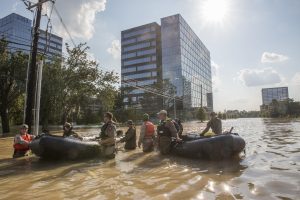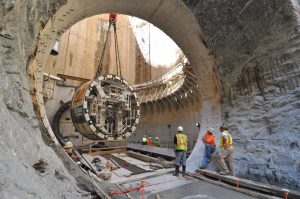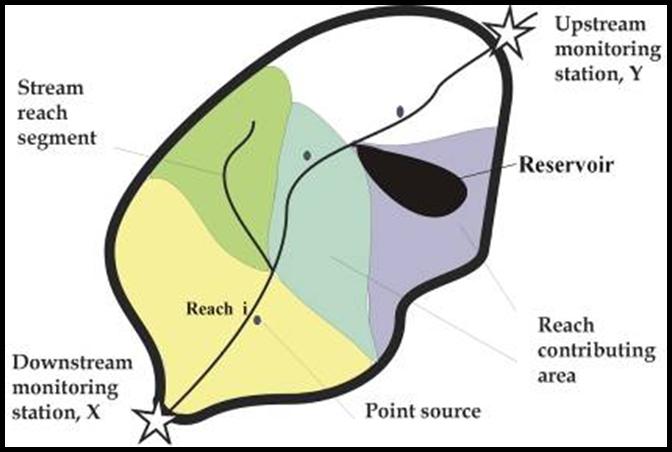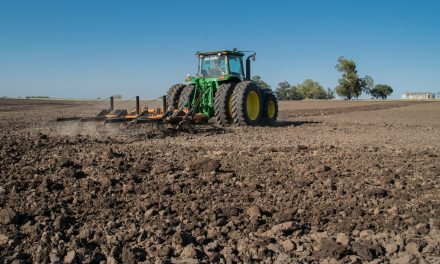Although downtown Houston, Texas, sits only about 15 m (50 ft) above sea level, enough room exists underground to build a massive tunnel system for stormwater conveyance, according to the preliminary results of a Harris County Flood Control District (HCFCD) inquiry.
The conveyance system would span about 16 km (10 mi) and consist of tunnels 8- or 12-m-wide (25- or 40-ft-wide), according to an HCFCD release. The agency enlisted a team of seven engineering consultancies led by Freese and Nichols (Fort Worth, Texas) to determine whether such ecological factors as soil type and underground geology are suitable for such a system.
“Geotechnical conditions do not appear to present any remarkable nor non-negotiable concerns for the large diameter tunnels at this time,” said Scott Elmer, Manager of HCFCD’s Engineering Division. “Geologic faults in Harris County may require special design and construction considerations if crossed by a tunnel, but it is not a fatal flaw.”
Recovering with resilience
Building the system according to plan would cost Harris County up to $1.5 billion, according to study estimates.

Hurricane Harvey, which caused severe destruction in the area of Houston, Texas, in 2017, prompted local flood officials to seek out a more comprehensive approach to stormwater management. Harris County Flood Control District recently announced results from a feasibility study that would install a large-diameter stormwater tunnel system beneath Houston. U.S. Marine Corps.
HCFCD has considered major investments in stormwater management before. According to a release from the agency, HCFCD conducted a similar feasibility study on a “trenched box culvert system” along Interstate 10 in 1996, but the project was never completed.
But Hurricane Harvey, which in 2017 caused historic destruction in the region, prompted new interest in improving the city’s resilience against flooding. Flooding from Harvey caused eight deaths; necessitated the rescue of more than 1,800 residents from high water; and damaged more than 1,000 homes and businesses, the Houston Chronicle reported. The recent feasibility study is funded by a disaster relief grant from the U.S. Economic Development Administration.
The study revealed that the large-diameter tunnel concept would accommodate much larger flows than the culvert system and deliver floodwaters safely into the Houston Ship Channel. This approach also would minimize aboveground disruptions during construction, local flood officials say.
East Coast similarities
Part of the feasibility study involved comparing HCFCD’s proposed tunnel system with similar projects in other cities.
“Our analysis of the geotechnical conditions [in Houston] indicate that the soil and groundwater conditions in Harris County are similar to Washington, D.C. — and could potentially be even better for tunneling,” said Brian Gettinger, Tunneling Services Leader for Freese and Nichols, in the release.

Engineers working on the Houston tunnel study compared the region’s geological conditions to those of Washington, D.C., which completed a similar deep tunnel project in 2016. According to DC Water, the system reduces annual flooding probability by approximately 35% in the neighborhood that it serves. DC Water
After nearly 3 years of construction, DC Water (Washington, D.C.) cut the ribbon on its First Street Tunnel project beneath the Bloomingdale neighborhood in October 2016. The D.C. system’s tunnels measure 7-m-wide (23-ft-wide), just smaller than those HCFCD is considering. During a particularly rainy day in July 2017, the First Street Tunnel system stored and redirected as much as 3.4 million L (900,000 gal) of runoff away from Bloomingdale, which had experienced years of chronic flooding, reported American University Radio. According to DC Water, the system reduces the neighborhood’s annual flooding probability from 50% before the tunnel system to 15% today.
Visit www.hcfcd.org for updates on HCFCD’s deep-tunnel study.







